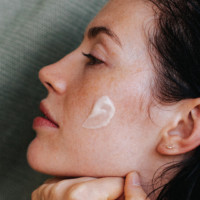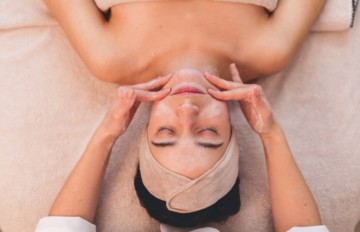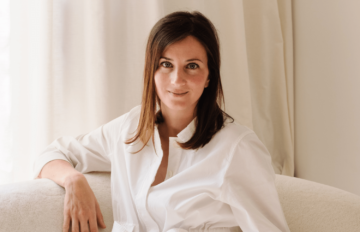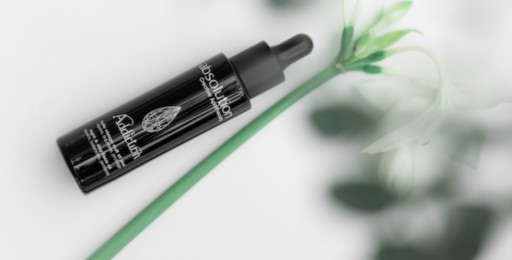
Spots on the face: causes and solutions
Spots on the face and how to treat them?
The skin of the face is particularly prone to blemishes and breakouts. Why? Because it’s one of the areas where you’ll find the highest concentration of sebaceous glands. The main reason why red and white spots on the face are such a big problem is, of course, because (unlike spots on the back and chest) they’re so visible! Let’s face it, when you have a spot on your nose, right in the middle of your face, it can feel like it’s the only thing that you and others can see! While hormones are partly responsible for spots, there are also other factors that can cause or aggravate them.
The different types of spots on the face

Before you can determine the cause and significance of spots on your face, you have to be able to tell them apart. The type of spots you most often find on the face are the following:
- Whiteheads You might call them pimples, but dermatologists call whiteheads “closed comedones” as they sit below the skin surface. These are the most common type of spot, and they result from a buildup of sebum, bacteria and dead skin cells in pores. They measure 2 to 3 mm in diameter and are small and red at first, before turning white.
- Blackheads With a diameter of 1 to 3 mm, blackheads are similar to whiteheads in that they’re caused by a buildup of sebum, bacteria and dead skin cells in pores. Blackheads are “open comedones” that are exposed to the air, and their dark color is due to the oxidation of sebum. Combination and oily skin types produce more sebum than other skin types, making them prone to blackheads, which frequently occur on the nose, chin and forehead.
- Red spots Dermatologists refer to these small red bumps as “papules.” They don’t contain any fluid or pus, can be swollen and painful, and have a diameter of less than 5 mm. Papules sometimes turn into pustules if they become inflamed or if you pick at them with your fingers or tools that have not been disinfected.
- Pustules In most cases, pustules are white spots filled with pus that is partly made up of sebum. Pustules are characterized by their larger size, with a diameter of over 5 mm. If you have pustules, it’s best to consult a dermatologist, as they may require medical treatment.
- Rosacea Rosacea is a skin condition that causes redness and what looks like small broken blood vessels on the cheeks and the sides of the nose. It tends to affect people with very fair skin. It remains difficult to know the cause of rosacea, but those who suffer from rosacea must keep to a very gentle skincare routine that reduces the risk of inflammation.
- Milia Milia are tiny (1 to 2 mm) white or yellow dry bumps that usually appear around the eyes and on the eyelids. They can also appear in clusters of 50 to 100 bumps on the cheeks or forehead. Milia are harmless and have nothing to do with acne. There are several factors that can cause milia to form. These include skin that doesn’t shed dead cells properly, that’s been overexposed to the sun, or burned. Milia can also occur if you over-exfoliate or use cosmetic products that don’t suit your skin type. To get rid of milia, we recommend seeing a dermatologist rather than trying to remove them yourself, as there’s always a risk of causing inflammation, which in turn could lead to scarring.
- Vesicles These unsightly spots take the form of tiny blisters that contain a clear liquid. They tend to be itchy, and when they dry up, they form a scab that can then leave a stubborn scar. Vesicles are most often associated with chickenpox (in children), and herpes or shingles (in adults) – all of which are viral infections.
What are the different causes of spots on the face?
By understanding the causes of spots on your face, you can act on the triggers and also establish an appropriate skincare routine. Spots can be caused by internal or external factors.
Hormones
Hormones are the main internal cause of spots on the face. You’ve no doubt heard of hormonal acne, but hormonal disruptions occur throughout your lifetime, and can also explain why blemishes are appearing on your face and/or body. The most obvious examples are during pregnancy, after childbirth, when you’re going through menopause, or on your period.
Skin type
The second internal factor responsible for spots on the face is skin type. Oily skin is naturally prone to both open and closed comedones because it produces more sebum. Very sensitive and/or very fair skin, meanwhile, is more likely to develop redness – and even spots – related to rosacea.
Emotional state
A period of intense stress or suppressed anger can lead to spots on the face, which can take different forms: red spots, blackheads, vesicles caused by labial herpes (cold sores), hives, stress rashes, etc.
Imbalances in the body
While we’re on the subject of the internal causes of spots on the face, it can be interesting to look at the approach that would be taken by alternative medicine practitioners. Chinese medicine connects the location of spots on the face to an imbalance in an organ. For example, spots on the forehead are linked to the digestive system. Spots on the cheeks, meanwhile, could be linked to a problem with lung function. So if you smoke, this might motivate you to stop! Spots on the temples or between the eyebrows are said to indicate that the liver is struggling to cope.
External factors that can cause spots on the face

Spots on the face are sometimes due to external factors, with the most frequent being:
- Unsuitable cosmetic products. Some face creams are particularly comedogenic (i.e., they block pores, making comedones more likely to form), or contain ingredients that trigger allergic reactions.
- Bacterial or viral infections (chickenpox, shingles, herpes, etc.).
- Overexposure to UV rays (from the sun or a tanning bed), which can cause milia or heat rash.
- A harsh skincare routine or, on the contrary, the lack of a regular skincare routine.
- Diet. In addition to food allergies that may cause a skin rash, the food we eat can have a major impact on the condition of our skin. For example, if you eat too many fatty and sugary foods, it can cause inflammation of the digestive system, which in turn can negatively impact the skin, particularly around the forehead.
Spots on the face in adults: a closer look at hormonal acne
You’d be mistaken to think that hormonal acne only affects teenagers. In fact, it can affect people at any age, and is more common in women than men. A study by the American Academy of Dermatology established that 50% of women aged 20 to 29 years old suffered from hormonal acne, and 25% of women aged 40 to 49. During puberty, hormonal acne often appears in the T-zone, i.e., the forehead, nose and chin. Hormonal acne in adults, meanwhile, tends to form on the lower part of the face (around the bottom of the cheeks and jawline).
Hormonal acne is most often caused by hormonal fluctuations during menstruation, but can also be related to polycystic ovary syndrome, menopause, contraception and hyperandrogenism. Fortunately, there are ways to fight hormonal acne, particularly by adjusting your diet. Avoid dairy products made with cow’s milk and refined sugars, at least for as long as it takes for your skin to calm down. You might also consider seeking advice from a naturopath, who could give you guidance and suggest a personalized program, and perhaps even recommend some effective natural food supplements.

How to reduce spots on the face
Overly harsh skincare products can aggravate the condition of your skin and make spots more likely. Isabelle Carron, founder of Absolution, wanted to offer a skincare routine that would tackle blemishes and reduce redness on the face while supporting the skin’s natural ecosystem. With this in mind, she developed natural and certified-organic skincare products rich in botanicals.

For those who suffer from “temperamental skin,” she recommends the following beauty routine: Morning First, wake up your skin with a floral water or La Brume Systémique. Then apply Le Booster PURETÉ – a serum that purifies, regulates, and helps to diminish blemishes without drying the skin. Among the ingredients in Le Booster PURETÉ, you’ll find Propolis, renowned for its skin-healing benefits; Arrabidaea Chica, which purifies and helps to rid skin of impurities; and Tepezcohuite, which was used by the Mayans for its repairing effect on the skin. Follow with La Crème de Santé – a light moisturizing cream with 20 active ingredients that work together in synergy to restore balance to your skin’s ecosystem. This cream contains Hyssop extract with anti-inflammatory and antibacterial properties, which helps to relieve acne; Coconut oil, a gentle, natural emollient with antibacterial benefits that calms irritation; and Bioecolia®, a prebiotic that works to regulate the skin’s microbiome.
Evening Cleanse your skin with Le Nettoyant Pureté – a very gentle, sulfate-free cleansing gel that contains purifying Salicylic Acid and soothing Oat. Next, apply a drop of Le Booster PURETÉ mixed with two drops of the Addiction face oil. All skin types love this multi-purpose facial oil, which repairs, balances, and protects with its blend of 27 certified-organic botanical and essential oils. The formula contains White Lily Extract, which helps to relieve redness and irritation, Hazelnut Oil, which helps to control sebum production, and Italian Helichrysum essential oil, which reduces the appearance of scars and has an anti-inflammatory action on spots.
Need more advice? Or maybe some help to put together a customized skincare routine? Try our online skin – it only takes a few minutes!






















